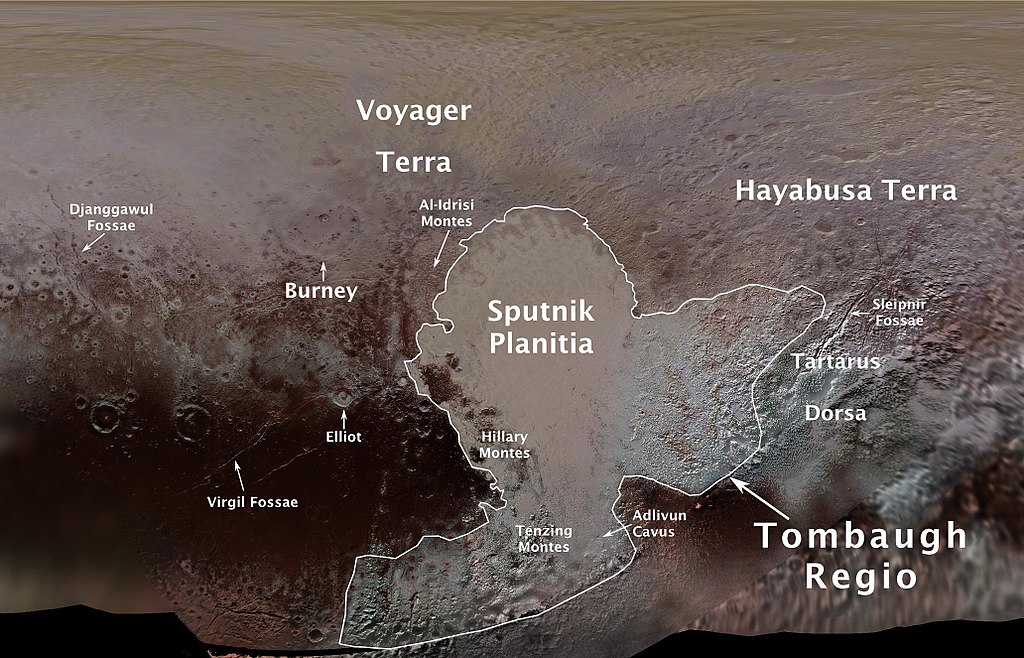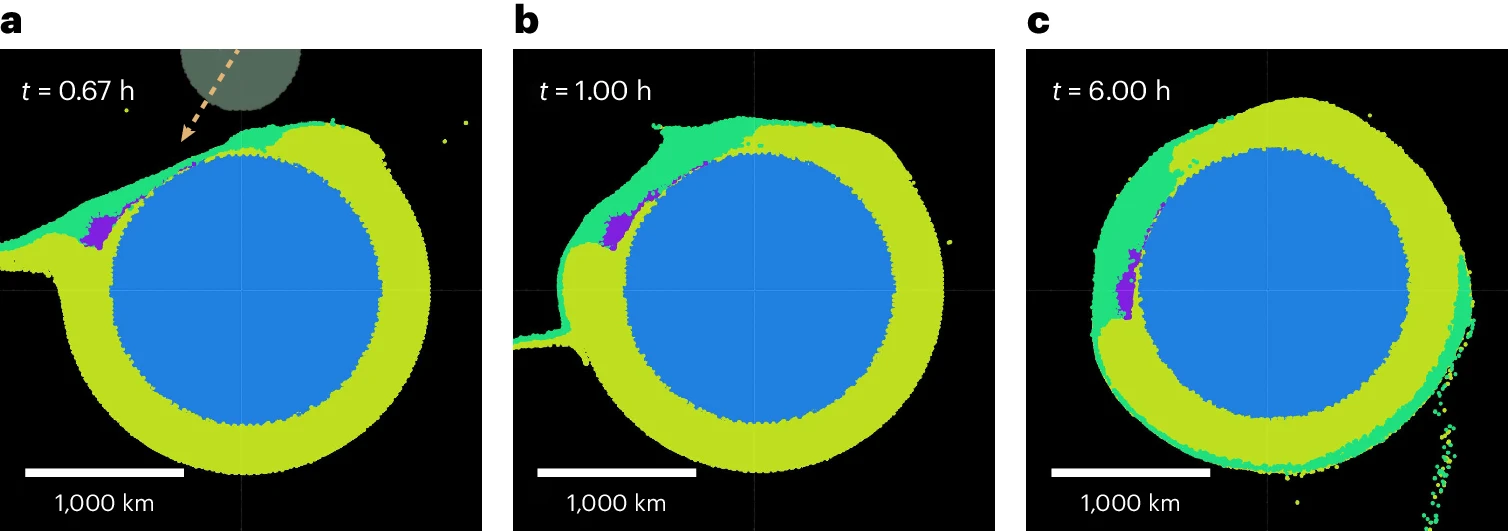Sputnik Planitia
During the later stages of my PhD and subsequent postdoctoral research position, I led an investigation into the impact origin of Sputnik Planitia on Pluto.
Sputnik Planitia is the most prominent feature of Pluto’s surface and makes up the majority of Tombaugh Regio, the famous “heart” of Pluto (Stern et al., 2015). It is a huge, teardrop-shaped basin that is filled with highly reflective nitrogen ice that provides a bright white, smooth appearance. It’s location lies very close to the equator, which is unexpected because such a large basin should move towards a planets pole over geological time due to a process known as true polar wander. Instead, it is thought that a large mass is hidden beneath the basin that counteracts its expected mass deficit and instead yields a net mass excess that drove Sputnik Planitia onto its present-day near-equatorial location (Nimmo et al., 2016).
 Map showing most of Pluto’s surface, with Sputnik Planitia and other major features labelled (credit: NASA/Johns Hopkins University Applied Physics Laboratory/Southwest Research Institute).
Map showing most of Pluto’s surface, with Sputnik Planitia and other major features labelled (credit: NASA/Johns Hopkins University Applied Physics Laboratory/Southwest Research Institute).
Using smoothed-particle hydrodynamics (SPH) simulations that include the often neglected solid strength of ice, my collaborators and I discovered a novel impact regime that can explain the peculiar shape of Sputnik Planitia while simultaneously providing the required mass excess for equatorward true polar wander. We find that a large body (of size similar to that estimated of Varda) with a rocky core surrounded by an ice mantle impacting Pluto at 30° (from perpendicular) would excavate a Sputnik-shaped region and refill it with its own material. The rocky core of this body would remain intact throughout the event and is buried beneath the flattened ice mantle at the surface (see figure below). We then propose that the ice mantle of the impacting body has a higher density than that of Pluto, causing the lower elevation basin of Sputnik Planitia to form as it sinks.
 An example simulation showing the proposed impact mechanism to form Sputnik Planitia. Colour represents the composition and parent body: purple is the impacting body core, blue Pluto’s core, green the impacting body mantle and yellow Pluto’s mantle. (a) Right after impact: A crater forms, and the impacting body’s core slows down. (b) After the crater collapses: The crater fills with the impacting body’s mantle, and the impacting body’s core begins descending towards Pluto’s core-mantle boundary. (c) 6 hours later: Pluto’s altered state after the collision is shown.
An example simulation showing the proposed impact mechanism to form Sputnik Planitia. Colour represents the composition and parent body: purple is the impacting body core, blue Pluto’s core, green the impacting body mantle and yellow Pluto’s mantle. (a) Right after impact: A crater forms, and the impacting body’s core slows down. (b) After the crater collapses: The crater fills with the impacting body’s mantle, and the impacting body’s core begins descending towards Pluto’s core-mantle boundary. (c) 6 hours later: Pluto’s altered state after the collision is shown.
This work was published in Nature Astronomy.
References:
Nimmo, F. et al. Reorientation of Sputnik Planitia implies a subsurface ocean on Pluto. Nature 2016 540:7631 540 (7631), 94–96 (2016). https://doi.org/10.1038/nature20148
Stern, S. A. et al. The Pluto system: Initial results from its exploration by New Horizons. Science 350 (6258) (2015). https://doi.org/10.1126/science.aad1815
